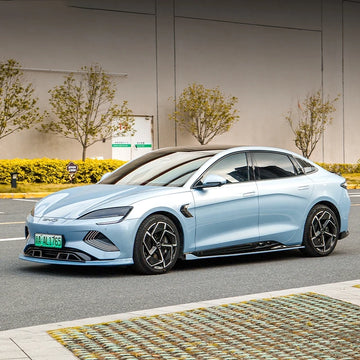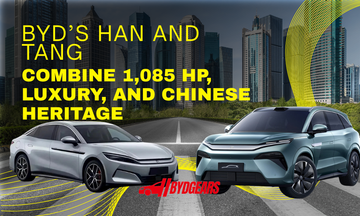BYD has unveiled its latest flagship models—the Han L sedan and Tang L SUV—marking a new chapter in the brand’s push toward premium electric mobility. Building on its position as China’s bestselling automaker in 2024 with 4.27 million vehicles sold, BYD now pairs cutting-edge performance with design deeply rooted in Chinese culture.
Performance and Engineering
Both models debut an advanced dual-motor powertrain, with the all-wheel-drive variants producing up to 810 kW (1,085 hp). The rear motor alone delivers 580 kW (777 hp), ranking among the most powerful in any production car. The Han L sprints from 0–100 km/h in 2.7 seconds, while the plug-in hybrid variant does it in 3.9 seconds—performance on par with elite sports cars.
Larger than before, both exceed five meters in length. The Han L measures 5,050 mm with a 2,970 mm wheelbase, while the Tang L spans 5,040 mm and offers three rows of seating plus up to 1,960 liters of cargo space.
Design with Cultural Depth
BYD’s design team, led by Wolfgang Egger, integrated Chinese heritage into every detail. The Han L’s taillights mimic phoenix wings, while the Tang L’s patterning draws from bamboo weaving. Paint finishes evoke porcelain craftsmanship, and D-pillar styling reflects traditional brush strokes. Even the shift from “Dragon Face” to “Loong Face” front-end design emphasizes the Chinese interpretation of the dragon.
Market Positioning
Expected to start around RMB 300,000 (US$40,950), the Han L and Tang L aim to undercut comparable European luxury EVs while offering higher performance. Launching alongside existing Han and Tang models, they expand BYD’s lineup and reinforce its growing presence in global markets, from South Korea to Europe.
With these flagships, BYD is signaling that it can deliver world-class performance and luxury while staying true to its cultural roots—a strategy designed to resonate both at home and abroad.



